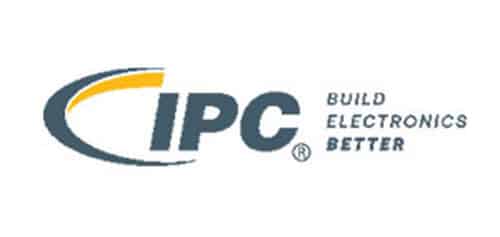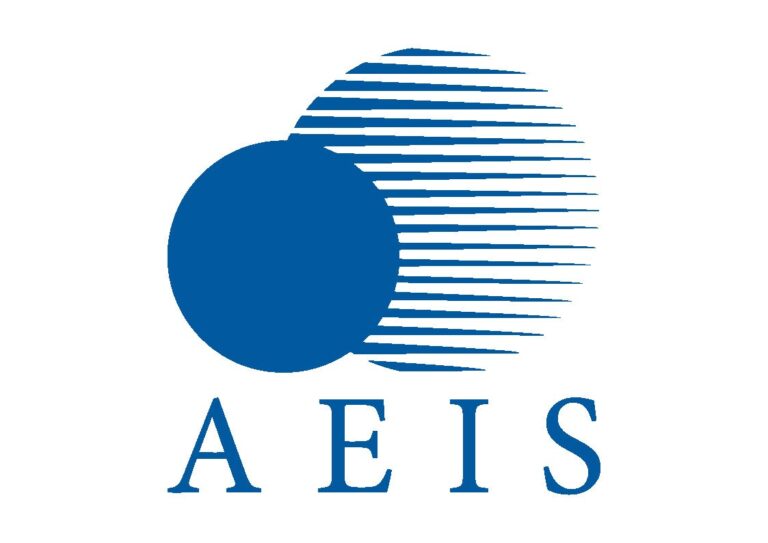WISeKey International Holding Ltd. (SIX: WIHN, NASDAQ: WKEY), a cybersecurity, AI, Blockchain, and IoT company operating as a holding company, will soon be initiating a awareness campaign to promote a major semiconductor fabrication facility (fab) project in Switzerland. This will mark a crucial step in the country’s journey toward self-reliance in chip production and positions Switzerland as an emerging hub in the semiconductor industry.
For many years, WISeKey has been at the forefront of such efforts and has built an extensive expertise in semiconductors. Via its subsidiary. SEALSQ Corp (Nasdaq: LAES), which focuses on semiconductors, PKI, and post-quantum technology products, WISeKey offers countries the opportunity to develop their own semiconductor personalization centers through Public-Private Partnerships (PPPs). This initiative aims to reduce reliance on foreign semiconductor manufacturing, thereby enhancing global supply chain security.
The development of a ab in Switzerland will require a careful balance of incentives, support, R&D, innovation, and access to capital. As highly advanced facilities, semiconductor fabs face escalating costs due to various factors, and each project presents unique requirements and cost considerations. WISeKey aims to raise awareness of the essential role a Swiss-based fab will play in building the foundations for the country’s innovation landscape. Given the project’s complexity and cost, establishing a close partnership and a solid investment case is crucial to its success.
The project’s objective in Switzerland is to start with a mini fab (a smaller-scale semiconductor fabrication facility) and gradually expand it into a full-scale semiconductor fab over the next 10 years. This phased approach allows for manageable investment, initial production capabilities, and flexibility to scale operations in line with technological advancements and market demands. Starting with a mini fab can cost between $100 million to $1.5 billion, depending on the desired technology node and production capacity. Over time, the facility can be expanded with the latest equipment and processes, eventually reaching the scale and capability of a full fab, which may involve a total investment of several billion. This gradual growth strategy aligns with Switzerland’s goal of fostering a domestic semiconductor ecosystem and innovation cluster.
Currently, Switzerland heavily relies on imports to meet its semiconductor needs. This new fab project is set to mitigate that dependence, enhance the domestic chip production ecosystem, create new jobs, and attract further investments in the technology and space sector. Locally produced chips will become essential for various industries within Switzerland, contributing to a more resilient global supply chain.
Why a Fab in Switzerland? The National and Economic Benefits
Switzerland stands to gain multiple benefits from establishing a semiconductor fab within its borders:
- Technological Sovereignty: By building a local fab, Switzerland can reduce its dependency on foreign semiconductor suppliers. This sovereignty will be crucial for the country’s industries, including healthcare, automotive, health, aerospace, and IoT. In times of global shortages or geopolitical tensions, Switzerland will have direct access to semiconductor production, ensuring its key industries can continue to operate and innovate.
- Economic Growth and Job Creation: The establishment of a fab will create thousands of high-skilled jobs, both directly in semiconductor manufacturing and indirectly in related sectors, such as logistics, supply chain management, and R&D. This influx of talent and investment will help to boost Switzerland’s economic growth, establishing the country as a leader in the global technology market.
- Innovation and R&D Hub: Switzerland is known for its world-class research institutions and a thriving innovation ecosystem. The presence of a semiconductor fab will further cement the country’s status as an innovation hub, attracting global companies to invest in research and development in Switzerland. This synergy will foster advanced research in fields such as quantum computing, artificial intelligence, and secure communications, accelerating the development of cutting-edge technologies.
- Strengthened Global Supply Chains: By creating an alternative source for high-quality semiconductor chips, Switzerland can contribute to the diversification of the global semiconductor supply chain. This diversification will make the global supply chain more resilient against disruptions, whether due to natural disasters, geopolitical conflicts, or economic crises. Switzerland’s reputation for quality and reliability will be an asset in providing a steady supply of critical chips to industries worldwide.
- Attracting Further Investments: The fab will serve as a magnet for investment in Switzerland’s electronics and technology sectors. With a robust semiconductor industry, the country can attract global companies looking to establish a European foothold in semiconductor design, manufacturing, and R&D. This influx of capital and talent will drive the growth of a high-tech ecosystem around the fab, stimulating further economic development.
Tackling Global Demand and Geopolitical Pressures
Today’s growth sectors—such as AI, vehicle electrification, autonomous driving, artificial intelligence, cloud computing, space exploration, renewable energy, supercomputing, connectivity, and defense—are increasingly dependent on semiconductor chips. In light of the global semiconductor shortage, the world’s largest economies are planning to invest heavily in new pilot lines and fabs within their national borders. Many countries, recognizing the inequalities in the global distribution of chip fabs, have enacted “chips acts” and stimulus packages to support local chip design and manufacturing. This push toward semiconductor sovereignty has become critical as geopolitical factors, market turbulence, export controls, and trade tensions threaten to disrupt the delicate balance of the global economy.
Given these dynamics, Switzerland is positioned to step into the semiconductor spotlight, leveraging its resources and capabilities to strengthen chip development efforts. This effort aims to foster a new cluster of semiconductor innovation in the country, offering an alternative to existing dominant players and contributing to the diversification of the global semiconductor supply chain.
Cost Projections for Fab Development
The cost of building a mini fab is significantly lower than that of a large-scale, cutting-edge fab. However, the cost still depends on several factors, such as the facility’s technology level, production capacity, and the complexity of the chips being manufactured.
Typical Costs for Mini Fabs:
- Older or Legacy Node Mini Fabs: For fabs producing chips at older technology nodes (28nm, 65nm, 130nm, etc.), the cost can range from $100 million to $500 million. These fabs are suitable for producing chips used in a variety of applications like automotive, industrial electronics, IoT devices, and other areas that do not require the most advanced nodes.
- Advanced Mini Fabs: For mini fabs equipped with more modern technology and capable of producing chips at nodes around 28nm or slightly below, the cost can be higher, ranging from $500 million to $1.5 billion. These facilities might not have the full capabilities of a large-scale fab but can still produce a variety of chips needed for more advanced applications.
- Specialized Mini Fabs (R&D, Prototyping): Mini fabs focused on research and development, prototyping, or small-scale production can have costs ranging from $50 million to $200 million. These fabs typically do not require high-volume production equipment and instead focus on flexibility and experimentation with different semiconductor processes.
The landscape of government incentives for building and operating advanced semiconductor fabs has been increasingly active in recent years. Political leaders worldwide now view a thriving domestic semiconductor industry and secure access to critical chips as fundamental components of economic and national security. These government incentives could significantly impact the cost outcomes for fab development, providing countries like Switzerland with a unique opportunity to strengthen their semiconductor capabilities.
WISeKey’s Vision for Semiconductor Sovereignty
WISeKey has built extensive expertise in semiconductors since acquiring the semiconductors company VaultIC from Inside Secure in 2016 and subsequently spinning off its semiconductor subsidiary, SEALSQ (Nasdaq: LAES). SEALSQ offers countries the opportunity to develop their own semiconductor personalization centers through Public-Private Partnerships (PPPs). This initiative aims to reduce reliance on foreign semiconductor manufacturing, thereby enhancing global supply chain security.
WISeKey’s offering through SEALSQ includes a suite of services and technologies such as secure elements, root of trust, cryptographic keys, and hardware security modules. The company provides the hardware, software, training, and ongoing support needed to establish and operate these centers. This solution is particularly relevant for industries like automotive, aerospace, and healthcare, where the need for secure and reliable microchips is paramount. By creating local personalization centers, countries can maintain a consistent supply of essential microchips, even amidst global shortages. Additionally, this initiative promises to spur economic development and job creation within participating countries.
WISeKey and SEALSQ are currently in discussions with several countries regarding the establishment of semiconductor personalization centers. Earlier this year, WISeKey began offering security services and semiconductors to IoT device manufacturers adopting the Matter Protocol, the leading standard for smart home devices from the Connectivity Standards Alliance (CSA). WISeKey’s Root Certificate Authority (CA) has been approved by the CSA for Matter device attestation, establishing the company as a Product Attestation Authority (PAA).
Advancements in Post-Quantum Technology
SEALSQ is also making significant progress in post-quantum technology. Its engineering team has successfully integrated Kyber and Dilithium CRYSTAL quantum-resistant NIST-selected algorithms into the MS6003, a WISeKey Common Criteria EAL5+ Certified secure hardware platform powered by an ARMSC300 core. This breakthrough marks the creation of the first quantum-resistant USB token, advancing the QUASARS project closer to building a Post-Quantum Hardware Security Module and Root-of-Trust.
Through SEALSQ, WISeKey is implementing the QUASARS project, an innovative solution based on the WISeKey Secure RISC V platform. This platform is paving the way for the Post-Quantum Cryptography era, offering hybrid solutions aligned with the recommendations of ANSSI (the National Cybersecurity Agency of France). SEALSQ has also received strong support from the French Secured Communicating Solutions (SCS) Cluster for this project.
WISeKey is also part of the National Institute of Standards and Technology (NIST) National Cybersecurity Center of Excellence (NCCoE) project, a new secure platform designed to establish best practices for trusted network-layer onboarding and aid in the scalable implementation of trusted IoT device onboarding solutions.
With the establishment of this new semiconductor fab and the potential development of personalization centers, Switzerland is poised to become a new cluster of semiconductor innovation. This effort will provide an alternative to existing dominant players, contributing to the diversification of the global semiconductor ecosystem.
WISeKey is actively consulting with various technology partners, Swiss cantons, and government authorities to identify the optimal location for this project.









